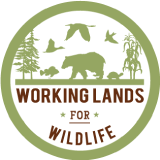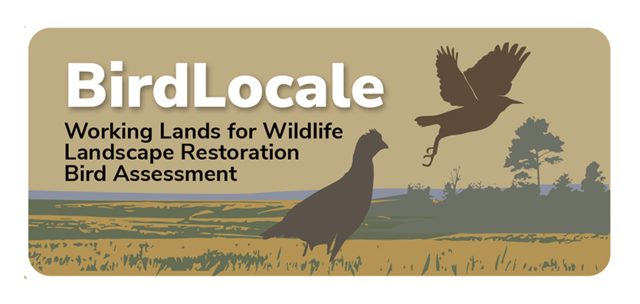-
 SFE Webinar: Introduction to the SE FireMap 1.0 - A New Tool to Map Fires Across the South
SFE Webinar: Introduction to the SE FireMap 1.0 - A New Tool to Map Fires Across the South
-
by
Web Editor
—
published
Dec 30, 2020
—
last modified
Oct 01, 2025 12:05 PM
—
filed under:
WLFW,
Webinar,
SE FireMap,
Video,
Wildland Fire,
News
The SE FireMap 1.0 is a new fire mapping system for the Southeastern United States. Developed with funding provided by the USDA NRCS, SE FireMap uses a remote sensing-based approach to track both prescribed fire and wildfire activity on public and private lands across the range of the longleaf pine.
Located in
Resources
/
SE FireMap Documentation
/
Webinars and Workshops
-
 Southeast (SE) FireMap Overview
Southeast (SE) FireMap Overview
-
by
Web Editor
—
published
Oct 01, 2025
—
filed under:
SE FireMap,
WLFW,
Video,
Wildland Fire
Located in
Resources
/
SE FireMap Documentation
/
Documentation Videos
-
 Southeast (SE) FireMap Fire History Metrics
Southeast (SE) FireMap Fire History Metrics
-
by
Web Editor
—
published
Oct 01, 2025
—
filed under:
SE FireMap,
Wildland Fire,
Video,
WLFW
Located in
Resources
/
SE FireMap Documentation
/
Documentation Videos
-
 Southeast (SE) FireMap Landsat Burned Area
Southeast (SE) FireMap Landsat Burned Area
-
by
Web Editor
—
published
Oct 01, 2025
—
filed under:
SE FireMap,
Wildland Fire,
Video,
WLFW
Located in
Resources
/
SE FireMap Documentation
/
Documentation Videos
-
 WLFW East Region Conservation Webinar Series: Northern Bobwhite Session #12 “Precision Ag and Bobwhites”
WLFW East Region Conservation Webinar Series: Northern Bobwhite Session #12 “Precision Ag and Bobwhites”
-
by
Web Editor
—
published
Aug 18, 2025
—
last modified
Aug 18, 2025 04:28 PM
—
filed under:
Training Resources,
WLFW,
Video,
Webinars and Instructional Videos,
Webinar,
Northern Bobwhite Quail,
Quail Forever,
Grasslands and Savannas,
Working Lands for Wildlife,
WLFW Northern Bobwhite Webinar Series
Session 12 of the “Northern Bobwhite” mini-series was presented by Jacob Taylor with Quail Forever in Tennessee. This session focuses on the basics of precision ag and how to use it to create bobwhite habitat. Topics covered include precision ag definition, return on investment, and the economics of including various practices into a conservation plan.
Located in
Training Resources
/
Webinars and Instructional Videos
/
WLFW Northern Bobwhite Webinar Series
-
 Geonode Part 1: Priority Scores
Geonode Part 1: Priority Scores
-
by
Web Editor
—
published
Mar 04, 2022
—
last modified
Sep 16, 2025 01:13 AM
—
filed under:
GeoNode,
GIS,
Conservation,
Video,
Conservation Design: An online geospatial portal
Part 1: Priority Scores
Located in
Training
/
Videos and Webinars
/
Conservation Design: An online geospatial portal
-
 Webinar: Restoration on Private Lands Pt. 1 – Restoration Planning, Weed Control, and Recommended Herbicides
Webinar: Restoration on Private Lands Pt. 1 – Restoration Planning, Weed Control, and Recommended Herbicides
-
by
Rhishja Cota
—
published
Oct 21, 2022
—
filed under:
Land Use,
Webinar,
Restoration,
Video,
Landscape Conservation,
Private Lands
This two-part webinar series includes extended Q&A geared towards restoration on private lands.
Located in
News & Events
-
 Webinar: Restoration on Private Lands Pt. 2 – Implementation, Biological Control Options, and Restoring for Birds
Webinar: Restoration on Private Lands Pt. 2 – Implementation, Biological Control Options, and Restoring for Birds
-
by
Rhishja Cota
—
published
Oct 21, 2022
—
last modified
Oct 21, 2022 01:51 PM
—
filed under:
Habitat Restoration,
Webinar,
Restoration,
Video,
Landscape Conservation,
Birds,
Private Lands
Part two of this webinar series includes extended Q&A geared towards restoration on private lands.
Located in
News & Events
-
 Webinar: Working with Landowners to Build Resilience Across the Landscape
Webinar: Working with Landowners to Build Resilience Across the Landscape
-
by
Rhishja Cota
—
published
Oct 21, 2022
—
filed under:
Pollinators,
Oak Forests,
Forests,
Landowners,
Video,
Land Use,
Webinar,
Landscape Conservation,
Resilience
This session identified strategies to connect with landowners.
Located in
News & Events
-
 Data Needs Assessment Research Update
Data Needs Assessment Research Update
-
by
Matthew Cimitile
—
published
Oct 21, 2014
—
last modified
Mar 04, 2022 04:18 PM
—
filed under:
Conservation,
Video,
Data and Maps
This presentation from Dr. Robert Baldwin of Clemson University provides an update to the Steering Committee on the Appalachian LCC funded research project. The Data Needs Assessment project is evaluating existing spatial data, assembling public data in geodatabase, defining conservation planning tasks that can be accomplished, identifying problems to address if data gaps are filled, interpreting uses of data, and conducting analysis of ongoing planning efforts.
Located in
Research


